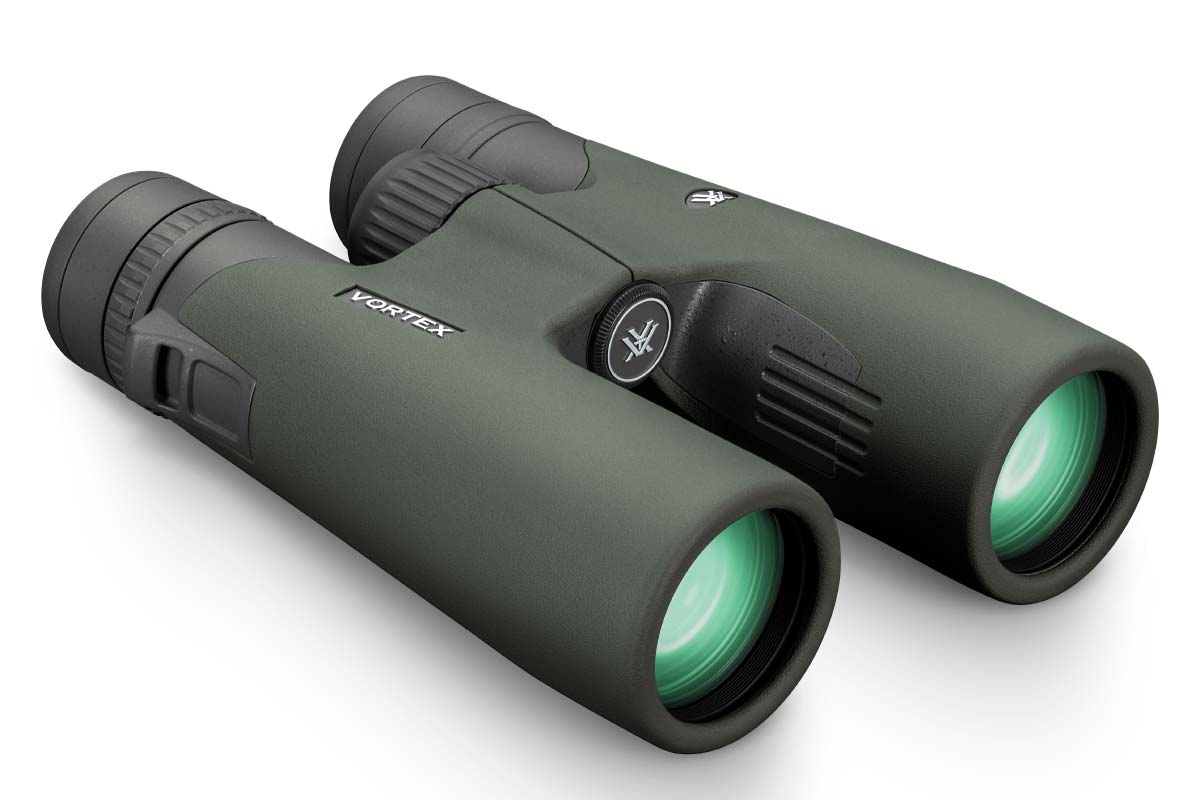Vortex Razor UHD 8x42 binocular
At this year's Birdfair, Vortex took a big step closer towards the high end of the optics market with the launch of a new model: the Razor UHD. This new binocular effectively combines the base specifications of the HD (reviewed in Birdwatch 273: 70-71) with an updated design, geared to significantly improve optical quality.
At first sight, the product jumps out as appearing quite large in comparison to many 8x42 models currently available in today's market. However, all things are relative and when its size is measured against some acknowledged top-tier binoculars, the difference is negligible.

So what's the reason for the size increase? Quite simply, the prisms used in the UHD are Abbe-Koenig which are larger and differently shaped to the Schmidt-Pechan prisms in the majority of binoculars. They are longer, which necessitates the longer-barrelled design, and it's widely acknowledged they deliver higher light transmission – albeit marginally and dependent on prism coatings.
In this instance, the 92% light transmission quoted by Vortex is up there with the best and there was no doubt when I started to use this new UHD that the image was indeed splendidly bright. This had an impact on both acuity and colour fidelity, with the Razor delivering a high level of image sharpness combined with an admirably accurate colour rendition.
On initial impressions, this was a binocular I wanted to spend considerably more time with from the outset – which I subsequently did. For me, continual field use with the contoured and comfortably padded neck strap presented no problems, but for some birders the weight of 913 g, compared to the 686 g of the 'regular' HD, may well require the use of a binocular harness instead.
Unsurprisingly, then, the UHD package does include a harness – but there's a twist: this connects to a newly designed external, semi-rigid case, referred to in some quarters as a 'chest rig', which houses the Razor. In this respect, it is the binocular equivalent of the stay-on case of a telescope, adding protection and keeping rain off the eyepieces with an attached, elasticated, pull-on/pull-off cover. The case also offers elasticated side pockets and an optional add-on pouch for small items. A standard binocular harness, for use without the case, is available as a separate purchase.
Additional protection comes in the more regular form of an articulated rainguard, which I found fitted easily and neatly, and tethered objective covers, which clipped inside the circumference of the lens housing and showed no signs of becoming detached in the field.
The UHD's chassis is magnesium alloy, overlaid with smooth rubber armour. There is no contouring, apart from the very shallow thumb rests and an aesthetic area of narrow ribbing on the inside of the barrels, towards the objectives. The length of the barrels provides more than enough surface area for grip and to achieve a comfortable and balanced holding position, facilitated by a commendable design that places the strap lugs above and away from the focusing wheel, enabling comfortable, straight finger contact with the latter.
Covered in milled, non-slip rubber, it turns very smoothly, with approximately 2.75 anticlockwise rotations from 1.37 m to infinity. This represents a lot of turning. However, the focusing range is not linear, with most of the 'turning work' required to focus from its closest at 1.37 m up to 15 m, with only approximately 0.7 turns required to focus from 15 m to long distance – what may be referred to as standard viewing range. Since most observation takes place in this spectrum, this feature does not appear to be a problem.
The dioptre ring is mounted on the right ocular. Single-eye focus is easily achieved even when the eyecups are fully retracted, by pulling the ring up, twisting it and setting it against a simple +/- scale before pushing it back down to lock it in place. Crowned in soft rubber, the eyecups are comfortable against the eye and twist out to lock in two positions above the base setting.
Returning to that all-important image, with 140 m at 1,000 m the new 8x42 Razor UHD has a much wider field of view than the equivalent HD model, at 129 m for the same range. It's wonderfully crisp – although not right to the edges – has a nice, almost '3D effect' and chromatic aberration is pegged to a minimum. I liked it.
I was impressed with the standard 8x42 HD, which will continue to form part of the range, but this new model is on a higher level and certainly worth checking out. Other products in the UHD range are 10x42, 12x50 and 18x56.
Further info
- Price: £1,599
- Size: 178x142 mm
- Weight: 913 g
- Field of view: 140 m at 1,000 m
- Light transmission: 92%
- Close focus: 1.37 m
- Gas filled: yes
- Waterproof: yes
- Guarantee: unlimited lifetime
Verdict
- High level of sharpness combined with accurate colours
- Very bright image
- Relatively heavy weight could be uncomfortable for some users


